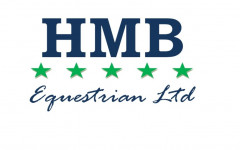Posted: 29th April 2020 | Back to news feed

The word dressage in French means ‘training’ and good training provides an accurate dressage test which is a sure fire way to improve your marks.
So, why is accuracy so important? The accuracy of the movements is a clear way to demonstrate the athletic ability of your horse and your skills as a rider.

Event rider and trainer, Harriet Morris-Baumber, believes perfecting the finer details are well worth the time and patience spent in training at home.
Here Harriet shares her top tips for accuracy.
Don’t cut corners, as this will allow you less time to prepare for the next movement and will make you look sloppy which will influence the judge’s overall opinion of your riding – remember there are 10 marks riding on how well the judge thinks you ride!
Make sure your circles start and finish at the specified marker. If you are unsure of where or how to precisely ride a circle, know the distances between all of the letters and really study the geometry of the arena, then apply this to the arena physically.
At home measure the distance and physically mark out the circle, putting out little gates for you to ride through, such as mini cones or poles. This will allow you to feel and see where a circle should be rather than just looking at it on a piece of paper or on a diagram.
Make sure you count the strides accurately; if a movement asks for three to five steps of walk make sure it’s not two or six. Equally, if the test asks you to halt for four seconds make sure you count one Mississippi, two Mississippi, to avoid moving off too quickly.

A good halt is really important and there is sure to be at least one in every test so they are well worth practising. When a judge is sat at C it is very easy to tell if the halt is straight but not so easy to spot if it’s perfectly square so always prioritise straightness in training and then aim for the halt to be square.
In some tests the free walk is worth double marks, so it is really important that the free walk is perfected. Teaching the horse to march forward whilst gently pulling the reins through your fingers so the head and neck can stretch down is a key skill to acquire. A good free walk doesn’t just happen by accident; it’s the result of correct training.
Use every step in the arena to your advantage. Ride extra deep into certain corners to give you extra strides to prepare for movements, by adding a stride, you add time.
Know when to adjust the volume, this means making your aids clearer and more obvious or making a quieter more subtle signal. For example, if there was a change of rein in medium trot coming up you might use the stride before and through the corner to ‘turn the volume up’ so the medium trot had more pizzazz. Or if there was a downwards transition, the paces would want ‘turning down’ slightly in preparation for a smooth transition.
The devil is in the detail and it is this level of accuracy that will make all the difference to the success of any dressage test.
Harriet is available for dressage, show-jumping and cross-country lessons at her base near York.
To find out more call Harriet on (07795) 562745 or visit www.harriet-morris-baumber.co.uk
The Equestrian Index newsfeed is compiled from articles submitted by advertising members and expresses the opinions of those members. Watsons Directories Ltd shall not be held liable for any inaccuracies or mis-statements therein.